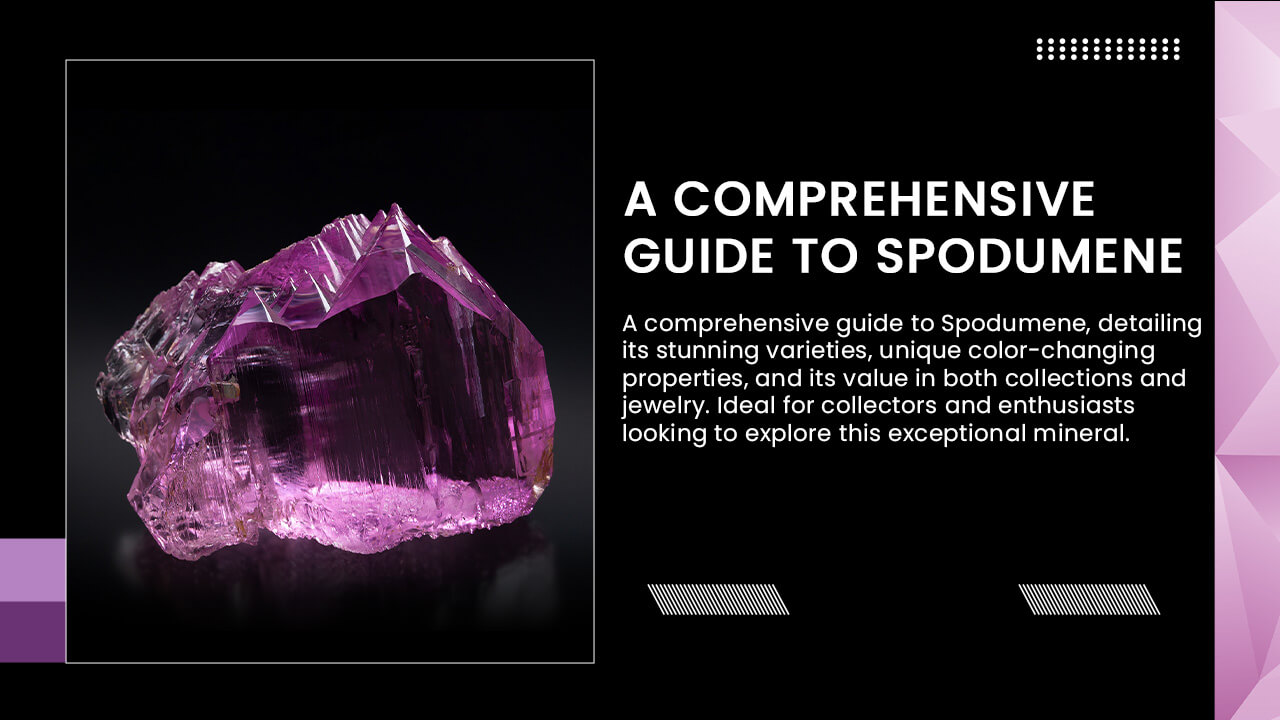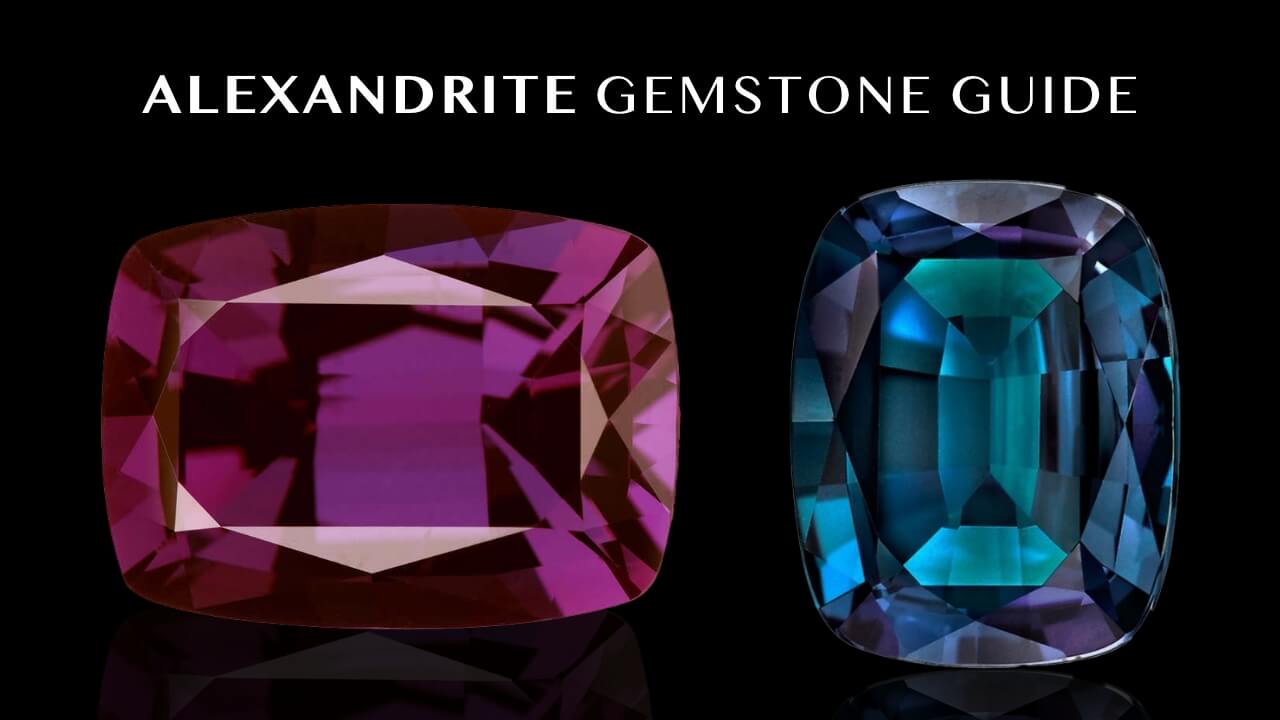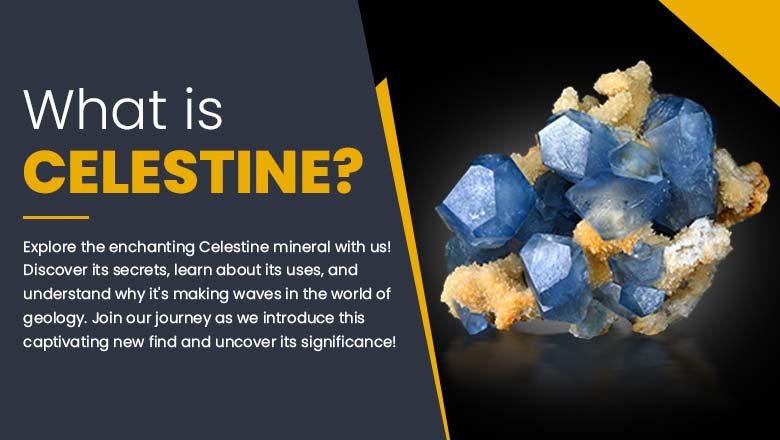
A Comprehensive Guide to Spodumene-Exploring Its Beauty, Varieties, and Market Value
In the world of minerals, and gemstones, SPODUMENE stands out as a mineral of exceptional beauty, and value. Whether you’re

In this article, I will let you know about the Alexandrite Gemstone Guide, where we delve into the captivating world of this rare and mesmerizing gem. In this article, I will explore its origins, types, value factors, and more.
Whether you are an enthusiast, collector, or someone looking to purchase an Alexandrite, this guide will provide you with valuable insights.
Let’s begin our journey into the enchanting realm of the Alexandrite gemstone.
Table of Contents
ToggleAlexandrite is a remarkable gemstone that captivates with its unique color-changing properties. As the focus keyword of this article, “Alexandrite” refers to a rare variety of the mineral chrysoberyl.
Its distinct characteristic lies in its ability to shift colors, exhibiting hues of green in daylight or fluorescent light and transforming into red or purplish-red under incandescent light.
This mesmerizing phenomenon, known as the “Alexandrite effect,” sets it apart from other gemstones. With its rarity, historical significance, and royal connections, Alexandrite holds immense value in the world of gemstones and is highly sought after by collectors and jewelry enthusiasts alike.
It’s enchanting beauty and captivating color-changing nature make Alexandrite a true gemstone treasure.
So, here are the guides for Alexandrite Gemstones:
The Alexandrite gemstone is primarily found in a few countries worldwide. The most famous origins of Alexandrite are in Russia, particularly the Ural Mountains, where it was discovered in the 19th century.
Other notable sources include Zimbabwe, Tanzania, Brazil, and Sri Lanka. Each region contributes unique characteristics to the gemstone, making it an exciting and diverse choice for gem enthusiasts.
The history of Alexandrite gemstone is deeply rooted in its Russian origins and royal connections. Named after the Russian tsar Alexander II, Alexandrite gained popularity during the reign of the Russian Empire.
It was first discovered in the Ural Mountains in the 19th century, capturing the attention of the royal court and quickly becoming a favorite among the elite.
The mesmerizing color-changing nature of Alexandrite, with its transformation from green in daylight to red under incandescent light, fascinated both the royals and gem enthusiasts.
Today, Alexandrite’s association with Russian royalty adds to its allure and historical significance. This gemstone’s regal past and rarity make it a highly coveted and treasured gem, sought after by those who appreciate its unique beauty and rich heritage.
The type of the Alexandrite gemstone is dependent on where they mined and found:
Zimbabwe is known for producing exceptional quality Alexandrite gemstones. Renowned for their rich and vivid colors, Zimbabwean Alexandrites often exhibit an impressive color change from green in daylight to red under incandescent light. These gems are highly sought after by collectors and gemstone connoisseurs.
Tanzanian Alexandrite is celebrated for its captivating hues. Known for their remarkable green to purplish-red color change, these gemstones exhibit a mesmerizing play of colors. The Tanzanian variety is highly regarded for its intense and vibrant color saturation.
Brazil is a significant source of Alexandrite gemstones. Brazilian Alexandrites are renowned for their unique color properties, displaying shades of green and red with varying intensity. These gems are cherished for their exceptional clarity and remarkable color change.
Sri Lanka, also known as Ceylon, is recognized for producing high-quality Alexandrite gemstones. Sri Lankan Alexandrites exhibit a remarkable color change from green to red or purplish-red. These gems often possess exceptional clarity and an alluring play of colors.
When evaluating Alexandrite gemstones, several factors contribute to their overall value. The 4 C’s – color, clarity, cut, and carat weight – play a crucial role in determining the gemstone’s worth.
Color: The color of Alexandrite is a crucial factor in determining its value. This gemstone exhibits a remarkable color change from green in daylight to red or purplish-red under incandescent light. The intensity and vividness of this color shift greatly influence the gem’s desirability and worth.
Clarity: Clarity refers to the absence of inclusions or blemishes within the Alexandrite. Gemstones with excellent clarity are highly valued as they allow maximum light reflection and enhance the overall beauty of the stone.
Cut: The cut of an Alexandrite gemstone plays a significant role in its brilliance and visual appeal. Well-cut Alexandrites maximize their light performance, showcasing their color-changing properties to their fullest potential.
Carat: Carat weight determines the size of an Alexandrite gemstone. Larger carat weights are rarer and command higher prices. However, it’s important to note that the other three C’s (color, clarity, and cut) also impact the overall value, and the perfect balance of these factors is essential for a valuable Alexandrite gemstone.
Proper care and maintenance are essential to keep your Alexandrite looking its best. Here are some tips to ensure its longevity and beauty:
Avoid Extreme Temperatures: Alexandrite should be protected from sudden temperature changes to prevent any damage. Avoid exposing it to extreme heat or cold.
Handle with Care: Handle your Alexandrite gemstone gently and avoid dropping it or subjecting it to rough handling. This will help prevent scratches or other potential damage.
Keep Away from Harsh Chemicals: Alexandrite is sensitive to harsh chemicals, such as bleach or ammonia. Avoid exposing it to these substances to prevent any potential harm.
Avoid Direct Sunlight: Prolonged exposure to direct sunlight can cause the color of Alexandrite to fade over time. Store it in a cool, dark place when not in use.
Regular Cleaning: Clean your Alexandrite using mild soap and a soft brush. Gently scrub the gemstone and rinse it with lukewarm water. Dry it with a soft, lint-free cloth.
Storing Alexandrite separately from other gemstones in a padded box or pouch will prevent scratches and damage.
By following these care tips, you can ensure that your Alexandrite remains beautiful and retains its captivating color-changing properties for years to come.
One of the most fascinating aspects of Alexandrite is its ability to exhibit a remarkable color change. Its hue shifts from green in daylight or fluorescent light to red or purplish-red under incandescent light.
This phenomenon, known as the “Alexandrite effect,” is a result of the gemstone’s unique composition and light absorption properties.
Alexandrite belongs to the chrysoberyl mineral family and possesses excellent hardness, making it a durable gemstone suitable for various jewelry applications.
The value of an Alexandrite gemstone depends on various factors. The intensity and quality of the color change, along with the gem’s color saturation, significantly impact its value.
Alexandrites with strong and vivid color shifts command higher prices. Additionally, larger carat weights, exceptional clarity, and well-cut gemstones contribute to their rarity and worth. Historical significance, origin, and demand among collectors also play a role in determining the gemstone’s value.
In this Alexandrite Gemstone Guide, we have explored the origins, history, types, value factors, and care tips for this mesmerizing gemstone.
Alexandrite’s captivating color change, rarity, and royal connections make it a highly sought-after gem. Whether you appreciate its beauty or desire to invest in a remarkable piece of jewelry, Alexandrite is an exquisite choice that will surely leave a lasting impression.
—
So, this is the complete information about Alexandrite Gemstone Guide, I hope you have gone through it.
Or If you want to know about any other minerals stones or want to purchase a stone. you can contact us Here.
You can check out our SHOP also.
Thanks for Reading.
Share

In the world of minerals, and gemstones, SPODUMENE stands out as a mineral of exceptional beauty, and value. Whether you’re

Welcome to the enchanting world of Celestine mineral – a gem that seems to have been plucked straight from the
This Faden Quartz crystal shows amazing luster and wonderful shape.
A wonderful crystal of Aquamarine features amazing color and a nice cluster shape.
This Faden Quartz crystal shows high luster and amazing clarity.
A wonderful specimen featuring pink Tourmaline with Quartz.
The Tourmaline crystals exhibit sharp terminations and a brilliant luster that enhances their vibrant hues.
Dumortierite Quartz is one of the rarer and more unusual blue varieties of Quartz.
No account yet?
Create an Account